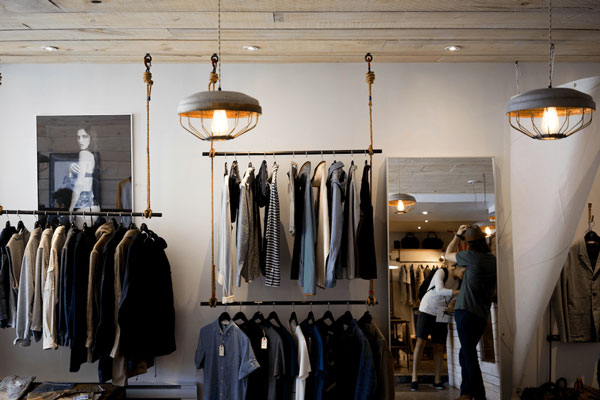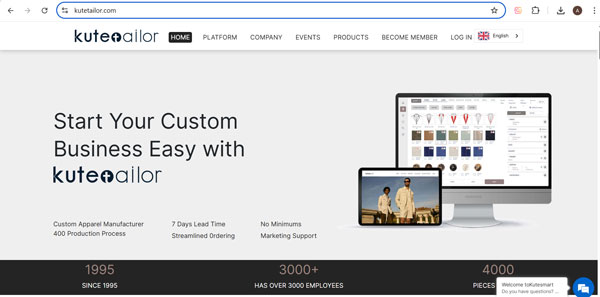
In the current challenging clothing industry, your brand is not only what you claim, but people’s perception about your brand matters a lot. Every inch of your apparel from logo positioning to fabric selection represents your business.
In this guide, I will explain how to maintain brand consistency across all custom garments. While doing so we’ll also make sure that the products look professional, feel harmonious, and durable as well as have an impact after use.

“Brand consistency means maintaining the same styling and messaging visuals across all platforms and products, including the logo, colour scheme, typography, and tone of voice.”
A unified brand identity allows customers to know what to expect every time they engage with your products. Moreover, studies in neurobranding suggest that it takes just 400 milliseconds for a first impression through visual branding.

Clothing as a Touchpoint Marketing: Well! Apparel isn’t merely a product to buy; however critical to note that it embodies history, representing a company physically over some time. However, you have to make constant changes to the logo, fit, or fabric style. It will dilute your brand’s impact and create confusion for clients.
Builds Trust and Recognition: Moreover, as customers recognise your brand due to consistency in the clothing's design elements as well as the packaging, they begin to trust it. This is essential for B2B buyers and fashion retailers who value reliability when placing repeat orders or establishing long-term partnerships.
Supports Scalable and Customizable Production: Last but not least, for custom shops or trading companies, sustaining uniformity within small or diverse orders helps scale efficiently. Clear branding guidelines help reduce production mistakes, streamline turnaround times, enhance satisfaction levels, and boost customer retention.
Your brand image plays a crucial role in how people perceive it. In this scetion, I’m going to suggest to you some smart tips that will help maintain consistency across every product you create.
As already discussed, everyone recognises a business by its branding logo. So, what do you think about the logo? Well, it's your brand’s face, and new customers first notice the colours whether it's your products, websites, or tags.
For instance, if you sold two blue jackets made under the same brand, but their blue shades are different, then your brands look unreliable. So, you must have to use exact colour codes like Pantone ( a universal colouring system used in textile printing), CMYK ( Cyan, Magenta, Yellow, Black-uses in ink printing) or RGB (Red, Green, Blue- used on screens) colour schemes.
Also, ensure logos always remain in predesignated spots at designated sizes relative to the surroundings. These are little things, but if left unnoticed, they can cause drastic effects on your brand’s image.
Additionally, your selection of materials also reflects the ethos of your brand. For example, a high-end label would opt for premium cotton or wool. In contrast, an eco-friendly brand is likely to prefer recycled or organic fabrics. These decisions help consumers make sense of your brand values, even before donning the apparel.
Thus, if you’re showing you’re an eco-friendly brand and thus using the same fabric across all your products, then this uniformity in fabric selection enhances affinity towards products. Thus, giving customers a consistent good experience each time.

Also, Typography ( styling of words like font, size, colour) and messaging ( words and letters describing particular things) are important. Here, the point to be noted is that spelling out statements using various fonts and sizes will only serve to confuse rather than bring order.
So, whether it’s care labels or packing boxes, all should be uniform without differing, as they all represent a company’s name.
Let’s take an example for better understanding! Suppose your brand portrays bold modern elements. Then match it with clean, sharp wording yielding desired effects. Alternatively, if you take softer approaches, then your brand style and messaging must be like giving calm, classy, yet equally polished vibes. Clear!
Furthermore, people will perceive everything about your brand based on the feel and fit of your clothes. It’s a Universal fact that even the best designs are rendered useless if there is poor construction or inaccurate sizing.
For example, as a luxury suit company, the finishing must be structured, tailored, and crisp. If you offer casual or sportswear, the priorities shift to comfort and flexibility. If one shirt is sized correctly, they will expect the same for subsequent shirts. This cultivates trust, which is very important while managing bulk orders alongside small ones.
A great design loses its value when a vendor misfollows instructions when creating a garment piece. That’s why you should work with a partner who understands branding, not just how to sew or print. But they should get all-in-one jobs right, i.e., matching colours and fabrics and following guidelines every single time without fail.
So, I would recommend asking for digital mockups, fabric swatches, and regular updates during production so that everything runs smoothly and prevents expensive blunders from happening.
At KuteTailor, we understand the varying needs of your fashion brand, trading company, or design business with our tailored methods. Whether it’s formal custom wear, casual dresses, or women’s apparel, we have you covered.

Every brand has its dos and don’ts on how to present itself, which are called rules in brand governance. These vary from every fabric selection to logo placement, thus contributing to building this guide.
Therefore, brand guides need to be comprehensive so they’re easy to follow, like outlining approved colours alongside text formatting for colour schemes and typography ratios, font choices, as well as logo size and placement. Thus, if you’re running a fashion business and working with multiple store vendors or franchises, then these comprehensive guidelines enable standardisation across regions.
Brand consistency “is the starting point”; customers can easily recognise, trust, and remember you. However, in today’s markets, trust alone is not sufficient. People now want more than just a shiny logo; they want something that they believe in. This is where authenticity crosses over as your next big leap.
Now that you have established visual branding through logos, fabric,s and fit, ask yourself:
· Do your materials reflect your values?
· Does your design say something about who you are?
· Do your products make clients proud wearing them?
If one claims eco-consciousness as a selling point, then their apparel needs to embody organic or recycled materials. These statements should be actionable instead of mere words meant for marketing slogans. The agreement of what you speak and the actions you take is what gives rise to authenticity. Got it!
Thus, a brand needs a production partner to gain a deeper understanding of brand perception beyond fabric and fit in order to achieve authenticity, as opposed to consistency. This explains why numerous fashion enterprises select Kutetailor- a custom apparel manufacturer.
From all above discussion, we have reached to conclusion that brand’s concistency plays an important role in building trust among clients. Whether you’re running custom apparel business or any other unifromity across every product help people remember your brand, thus chances of reppetiove buying contributing to revenue increase.
However, among all, finding a trusted production partener is equally importent. So, look no furthur than Kutetailor. We as a custom apparel manufacturer have years of experiebce in the production line custom clothing for both men and women.
We support your efforts not only towards making consistent clothing but also curating collections that illustrate the narrative of your brand—be it sustainability, graceful elegance, or audacious boldness. So, visit us now